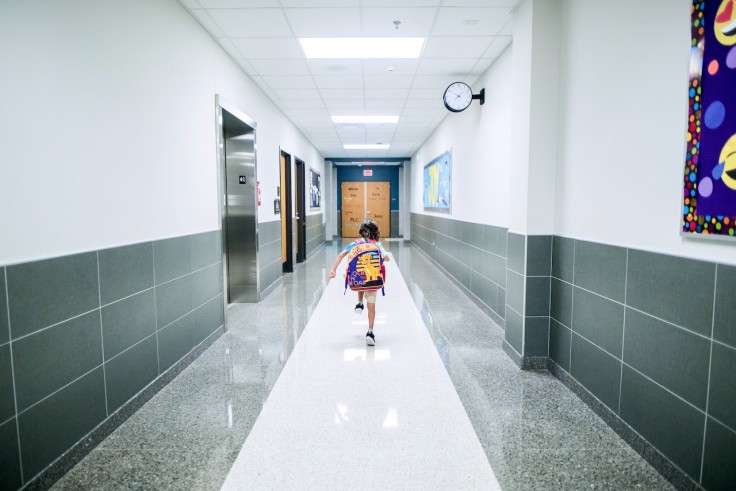
School doors have been opened now that the world is past the worst of the COVID-19 pandemic. However, students do not want to go to school more than ever.
Before the pandemic began in 2019, almost 6 percent of the nation's students missed school for more than 15 days on an average per year for a combination of reasons. These students are termed "chronically absent."
While schools welcome students for face-to-face classes, the number of chronically absent students has nearly doubled, and more schools report an increasing number of students missing classes or school altogether.
According to data released by the National Center for Education Statistics (NCES), 87 percent of public schools reported that children's socio-emotional development had been negatively impacted during the 2021-22 school year due to the COVID-19 pandemic.
Some of these absences are because of pandemic-related policies, such as students being asked to stay home if they show any COVID-19 symptoms or have been in close contact with someone who has tested positive. Moreover, the more than 1 million U.S. deaths due to the pandemic have also forced many students to miss school to tend to other family members.
How to end chronic absences of students?
But for those students who are emotionally not ready and would rather miss school, what can parents and schools do?
In his article in Phys.Org., Joshua Childs, Assistant Professor of Education Policy from the University of Texas, Austin, and a researcher who studies chronic absences, suggested five ways wherein parents and schools can team up to improve a child's school attendance.
1. School to collect, analyze and explain attendance data.
Schools collect overall attendance data based on the number of students present on a given day. However, many schools focus their care and concern only on unexcused absences, those without excuse letters from parents and doctors.
According to Childs, this can be a problem as kids are missing learning opportunities for not being in school regardless of why they are not in school.
Teachers who use data to further understand the reasons for the absences can discover and improve ways to encourage chronically absent students to return to school.
In Illinois, students can have up to five mental health days and make up for missed homework and exams upon returning to school. One elementary school in San Francisco has a raffle game for all kids who attend school on Mondays and Fridays, and winners receive prizes. This is their way of encouraging students not to miss school on days that are "frequently skipped." On the other hand, a program in Pittsburgh high schools gives a scholarship benefit to college students who get good grades and have more than 90% attendance.
2. Take advantage of technology.
Many schools already use text messaging to communicate with students and their families. Some schools use this to alert parents if their kids miss a class or school without their permission, encouraging parents to help the school get them back to school.
Four Georgia school districts lessened chronic absence by 8 percent after parents received text messages informing them that their children were absent and warning them that missing school may hinder their kids from graduating.
3. Pair chronic absentee students with mentors.
Schools can launch a formal program that can match chronically absent students with mentors who can assist them in connecting with others at school, get help with missed homework, and even find school staff who can provide mental and social services.
A mentoring program launched in New York City had chronically absent students back in school for almost two weeks of learning after mentoring connections and creating relationships with adults.
Mentorship programs have shown a lot of testimonies stating that students have been helped in school through high school - students' families get checked regularly, and students get academic support. They are taught how to navigate social dynamics within the school.
4. Connect students to mental and physical health services.
According to the study, "Masking Attendance: How Education Policy Distracts from the Wicked Problem(s) of Chronic Absenteeism," mental and physical health are the leading reasons why students miss schools, such as dental cavities, asthma or other breathing conditions, and anxiety and stress from violence or hunger.
According to research in Pennsylvania, school nurses can play an essential role in identifying and addressing these health problems that cause students to miss school. School teachers and nurses should team up to build critical services like medical check-ups and referrals to expert practitioners.
School counselors are also crucial in providing the support students need to make them go and stay in school. More than academic support, these chronically absent students may need connection with therapists to help them with their trauma or food banks to satisfy their hunger.
Local school districts in California launched student-retention efforts where the school's main goal is to meet the needs of students and their families. As a result, many students went back to school.
5. Reach out to the community and build local partnerships.
Bring together community-based organizations to have experts improve school attendance because schools will not be able to solve attendance issues on their own.
Cities like Chicago and Long Beach, California, have sent their district and school employees out to survey the local neighborhoods about the causes of students' absences. The activity helped them to identify potential barriers and provide solutions to the problems.
Furthermore, it highlights the value of the school to community members.
Related Article: How Hunger Affects Children's Learning Abilities; Studies Says Hunger Impacts a Child's School Performance